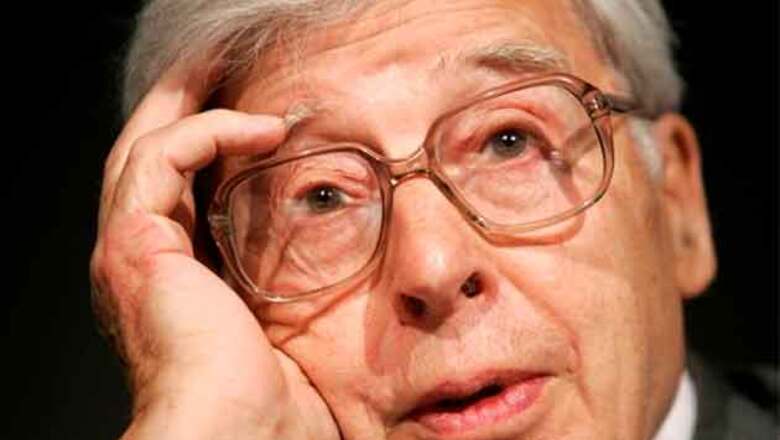
views
Stockholm: Robert Edwards of Britain has won the 2010 Nobel Prize in medicine for the development of in-vitro fertilization, a breakthrough that has helped millions of infertile couples to have children.
Edwards and Patrick Steptoe, who died in 1988, developed the IVF technique, in which egg cells are fertilised outside the body and implanted in the womb.
Starting in the 1950s, Edwards and Patrick Steptoe developed so-called IVF technology in which egg cells are fertilised outside the body and implanted in the womb. Steptoe died in 1988.
Other leading Nobel watchers have guessed that Kyoto University Prof. Shinya Yamanaka could be awarded for his discovery how to make stem cells from ordinary skin cells.
Recent winners of the Nobel Prize in physiology or medicine, and their research, according to the Nobel Foundation:
- 2010: British researcher Robert Edwards for the development of in-vitro fertilization.
- 2009: Americans Elizabeth Blackburn, Carol Greider and Jack Szostak for their discovery of how chromosomes are protected by telomeres and the enzyme telomerase, research that has implications for cancer and aging research.
- 2008: Harald zur Hausen and Francoise Barre-Sinoussi and Luc Montagnier for discoveries of human papilloma viruses causing cervical cancer and the discovery of human immunodeficiency virus.
- 2007: Mario R. Capecchi and Oliver Smithies of the United States and Martin J. Evans of the United Kingdom, for their discoveries leading to a powerful technique for manipulating mouse genes.
- 2006: Andrew Z. Fire and Craig C. Mello, of the United States, for their work in controlling the flow of genetic information.
- 2005: Barry J. Marshall and Robin Warren, of Australia, for their work in how the bacterium Helicobacter pylori plays a role in gastritis and peptic ulcer disease.
- 2004: Richard Axel and Linda B. Buck, both of the United States, for their work in studying odorant receptors and the organization of the olfactory system in human beings.
- 2003: Paul C. Lauterbur, United States, and Sir Peter Mansfield, Britain, for discoveries in magnetic resonance imaging, a technique that reveals the brain and inner organs in breathtaking detail.
- 2002: Sydney Brenner and John E. Sulston, Britain, and H. Robert Horvitz, United States, for discoveries concerning how genes regulate organ development and a process of programmed cell death.
- 2001: Leland H. Hartwell, United States, R. Timothy Hunt and Sir Paul M. Nurse, Britain, for the discovery of key regulators of the process that lets cells divide, which is expected to lead to new cancer treatments.
- 2000: Arvid Carlsson, Sweden, Paul Greengard and Eric R. Kandel, United States, for research on how brain cells transmit signals to each other, thus increasing understanding on how the brain functions and how neurological and psychiatric disorders may be treated better.
- 1999: Guenter Blobel, United States, for protein research that shed new light on diseases, including cystic fibrosis and early development of kidney stones.
- 1998: Robert F. Furchgott, Louis J. Ignarro and Ferid Murad, United States, for the discovery of properties of nitric oxide, a common air pollutant but also a lifesaver because of its capacity to dilate blood vessels.




















Comments
0 comment